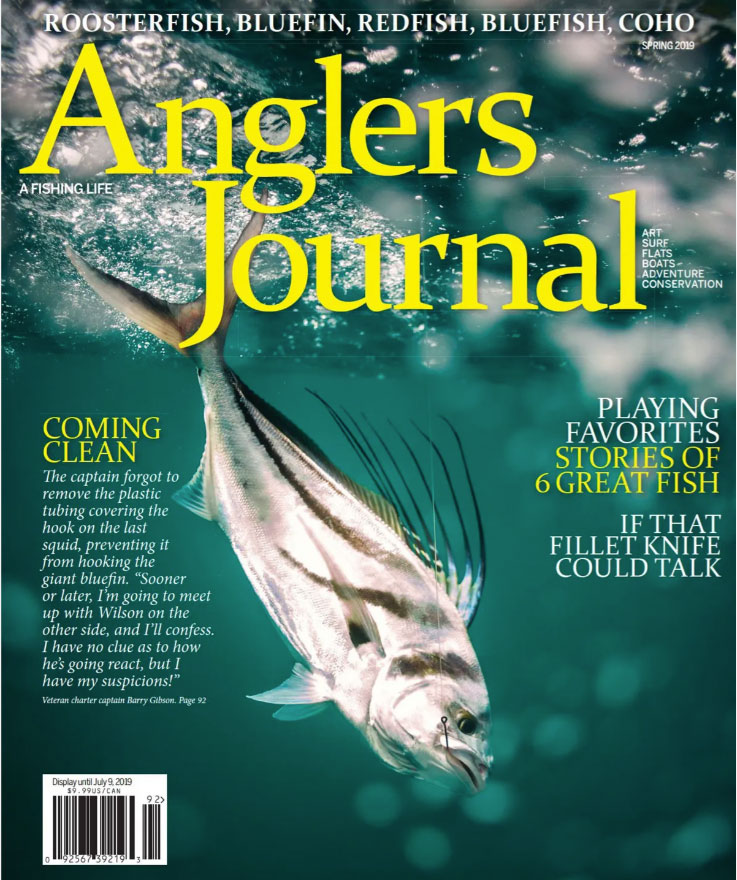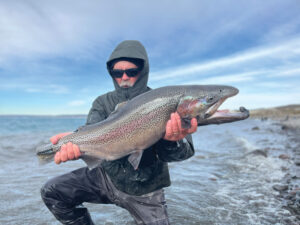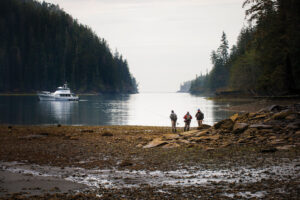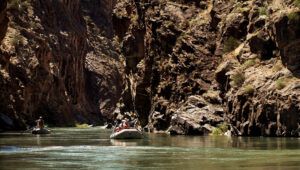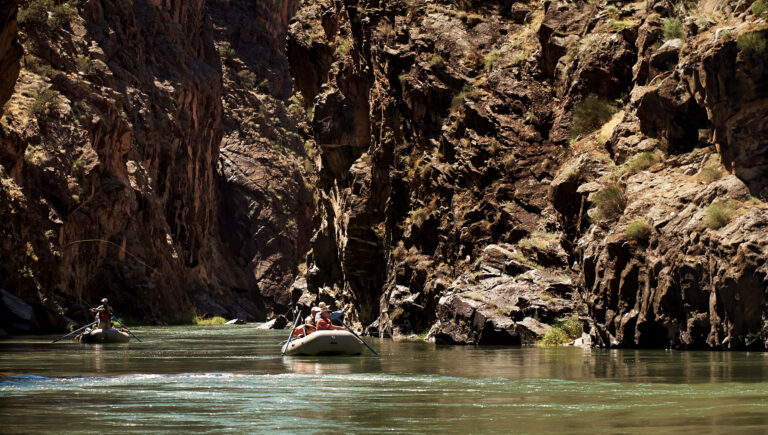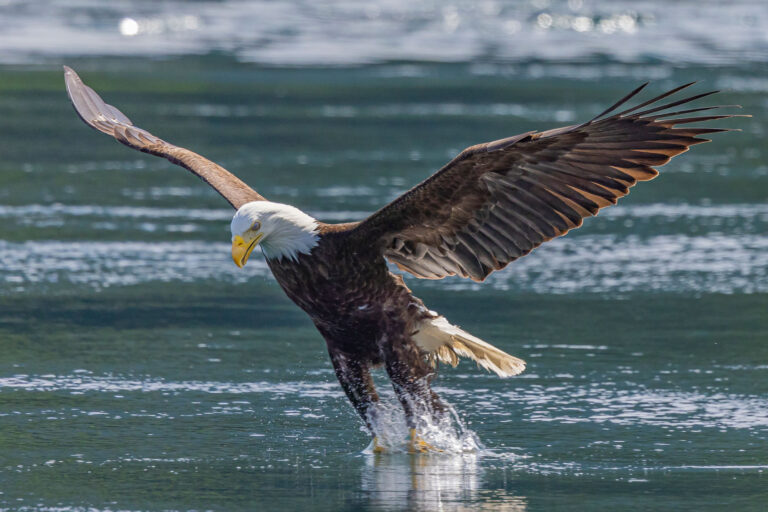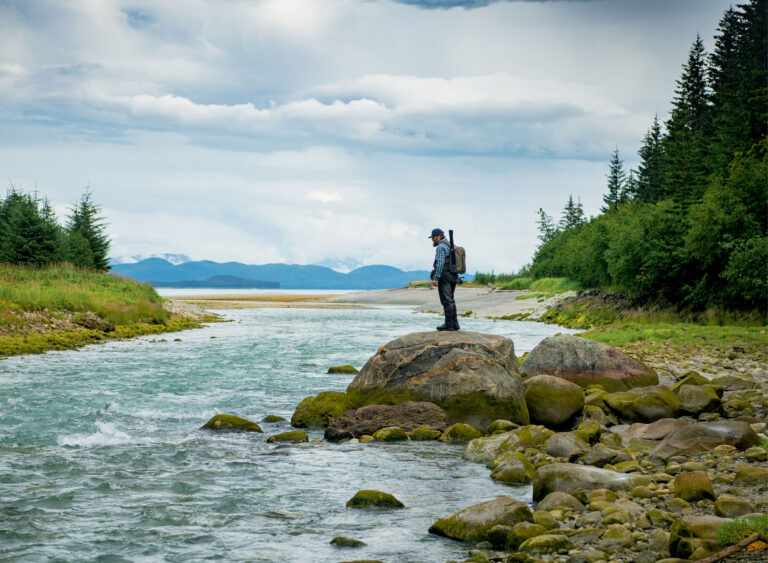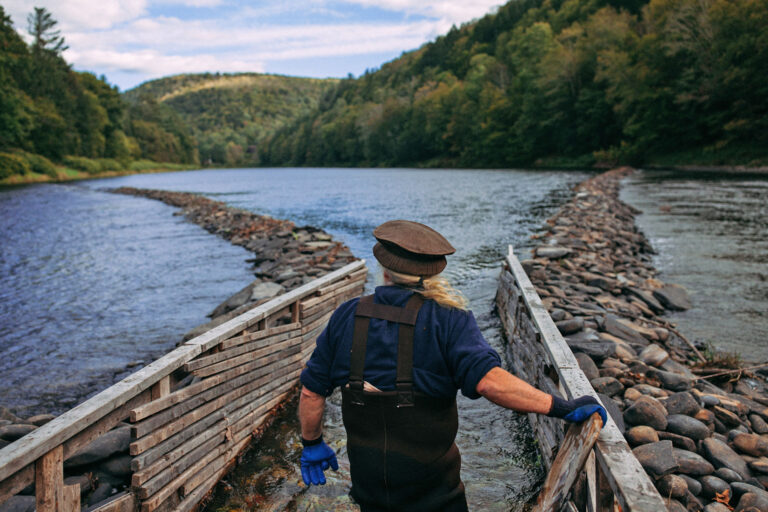About 25 years ago, a friend called from the Poconos. The East Branch of Wallenpaupack Creek, which had been private and little-fished for nearly 70 years, was about to open to the public. I was invited to a friends-and-family preview. Here at last was an almost-virgin, freestone stream that looked like the streams that Arnold Gingrich, Ray Bergman and A.J. McClane had written about.
With riffles, runs and pools, and ancient trees overhanging its shaded banks, it met all the requirements for kicking off clouds of mayflies to nourish trout that had not yet been educated to the dangers attached to a leader.
As it turned out, it was Hendrickson time, the most glorious mayfly hatch of the year on my home waters. On one perfect afternoon (pleasantly warm and slightly overcast) I worked my way up the Wallenpaupack. I was reminded of those fishing books that fill my collection using arrows to show where the trout lie: behind or in front of a rock, at the current seam by the riverbank, just below a riffle. By this time in my angling career, I had come to believe in those arrows about as much as I believed in the Tooth Fairy. But on that day in that stream I waded around a riffle to a long pool and saw that the Hendricksons were on … big time. Behind every rock that should have held a trout, I caught a trout. Likewise for the current seams.
 The gold and purple Hendrickson mayfly is a trout favorite.
The gold and purple Hendrickson mayfly is a trout favorite.Then the hatch fairly exploded, and at the head of the pool just below an oxygen-rich riffle the water boiled with frenzied trout on the feed. The only times I have seen anything like that is when a riot of bluefish or stripers pen up a school of baitfish. Yet with so much competition on the water from the natural fly, I couldn’t interest the marauders at the head of the pool. This taught me a lesson about fishing big hatches: You have a better chance of catching a fish when the hatch has peaked and is on the downswing. At that point fish are keyed in to a particular fly, but with fewer of them on the water your artificial stands a better chance of attracting fish. Furthermore, since the Hendrickson is one of the longest hatches in duration, you stand a good chance of success any time that the trout are active from mid-May through early June.
Cathedral of Trout
Hendricksons. To a fly fisherman, the name has a magic ring. It is the promise of late winter that the chilly gray days soon will end and the sweet spot in the year will arrive. The gold-and-purple flies come with the blossoming of the dogwoods, when the forest begins to fill in with its first blush of green. It is not the first mayfly hatch of the year. Traditionally that belongs to the Quill Gordon and at times the Blue Quill. But those flies, which usually arrive in April on my home streams in the Catskills, often hatch without the trout taking a whole lot of notice. Maybe the fish are just not accustomed to looking up to see what’s floating by on the surface. Or maybe the cold and windy days that often mark the change of season are as uninviting to fish as they are to fisherman. Early-season fly-fishing is like early-season baseball: too chilly, too rainy, and usually not that memorable.
When I first started to fly fish, I spent three days at a casting clinic run by Doug Swisher, co-author with Carl Richards of Selective Trout (Crown Publishers, 1971). One of his maxims was “fish the pleasant part of the day.” His theory was that mayflies often hatch at times that humans find most comfortable. In high summer this might mean the crack of dawn and well into the night, while in May the mayflies might hatch between noon and late afternoon when the air temperature is in the high 60s or low 70s.

Pretty damn-near perfect, if you ask me.
When the Hendricksons hatch, it is mesmerizing to watch them materialize on the surface of a gently flowing river, as if conjured out of the desires of fisherman and fish alike, transforming water that showed no signs of life into a tableau of trout swirling and splashing. The bugs, about the size of a nickel, ride with the current like a flotilla of miniature sailboats, trying to dry their wings before a trout gently sips them under in a rhythmic feeding pattern that fairly screams “Cast here … now!”
Or, more precisely, put your fly about five feet upstream of the rise form of the feeding trout so it can see your fly float into its cone of vision. As the newborn bugs flap their wings, they finally take flight. Their sunlit trunks — known to entomologists as the thorax — hang as if suspended from the indigo halo of their beating wings. In their struggle to gain altitude, they remind me of the tentative takeoff of a spacecraft in its first ungainly seconds after ignition: very slow, always giving the impression that at any minute they might give up and surrender to the shackles of gravity. Finally they break free and ascend in bursts of gold and sapphire light. In the Cathedral of Trout, this scene would make a gorgeous stained-glass window.
Named for a friend
The Hendrickson wasn’t always known as the Hendrickson nor was it first tied by a man named Hendrickson. It was the brainchild of Roy Steenrod, whose day job in the early 20th century was with the U.S. Post Office in Liberty, New York. He was one of the few who were taught to tie flies by the granddaddy of the American dry fly, Theodore Gordon. New York executive A.E. Hendrickson was one of Gordon’s friends — and a customer for his flies. When failing health curtailed Gordon’s fly tying, he passed along the business and the fishing friendship to Steenrod. Steenrod and Hendrickson quickly became angling partners, and during one afternoon of fishing Steenrod was inspired to tie a fly in imitation of the hatch on the river that day. He would later write:
One day in 1916, while we were fishing the Beaverkill below the junction pool at Roscoe, a hatch of flies came on. We had never seen the fish rise so freely for any fly as they did for this hatch. I caught one of the flies and put it into my fly box, and after lunch that day at Ferdon’s I tied some patterns of the fly as nearly as I could. We took fish with that fly day in and day out, and for years it proved to be a killer and is so today. One day, while sitting on the bank of the stream perhaps two years after I had tied the first patterns, the matter was brought up as to which I would call or name the fly. Looking at A.E., the best friend a person could ever wish to have, I said, “The fly is the Hendrickson.” I saw at once that A.E. was pleased.

Fishing vs. catching
That dry fly, like all flies that came out of the Catskill school of fly-tying, was as stark and spare as a piece of Shaker furniture. That simplicity and elegance was one of the many attractions that fly-fishing held for me. In classical mathematics and philosophy there is a principle known as Occam’s razor, which states that the simplest solution to a problem is by definition the correct one. Had William of Occam, who put forth that rule nearly 700 years ago, been a fisherman, I have little doubt that he would have applied the same principle to the recipe for the dry fly.
About 30 years after Steenrod tied the first Hendrickson, another fly-fishing legend, Art Flick, known as “The Laird [or Lord] of The Westkill,” published a plain-spoken and seminal work, Art Flick’s Streamside Guide (Putnam’s, 1947). His recipe for the Hendrickson called for a body of urine-stained vixen belly. Yep, you heard it right. What a whacko idea, pee-stained fur from the belly of a female fox! How could you not love a sport with that kind of weirdness as part of its lore?
And so, I began to fish the Hendrickson. Please take note: I did not say that I caught fish on the Hendrickson. In my first few years I chased reports of the hatch from Esopus Creek in the Catskills to the Little Lehigh in the Poconos. Some years the Hendricksons didn’t show when they were supposed to. Some years I didn’t. I remember sitting on the banks of the Battenkill in Vermont when during a whole afternoon I counted a grand total of six flies on the water. Not six trout but six flies! A far cry from the freely rising fish that Steenrod wrote about.
But Steenrod was from another era, when very big wild trout inhabited our Eastern waters. With the advent of hatchery fish and increased pressure on these rivers and streams, as well as the degradation of the rivers from overdevelopment, highway construction and “flood control” (which often works well until there is a flood), any stream supporting trout — relatively unharassed, in unspoiled water such as that of the Wallenpaupack on that wonderful afternoon of the Hendricksons — is more the exception than the rule. There are streams, or at least stretches of them, that behave the way trout streams used to do in bygone days, but it takes some dedication, patience and quite often a commitment to a fair amount of bushwhacking.
An original
My knowledge of the Hendrickson hatch (or any hatch, for that matter) owes much to the lessons I have learned in the last 20 years on the West Branch of the Delaware, often at the side of Al Caucci, who is in my opinion the most important, original and authoritative trout fisherman of the last half century. Al is a genial former industrial engineer. Along with his collaborator and fellow angler, Bob Nastasi, he wrote Hatches and Hatches II (The Lyons Press, 2004). Through years of investigating stream life by actually going into streams with a diving mask, Al and Bob chronicled the life cycle of the creatures that make up the trout’s food supply.
Like many of the great dry fly fisheries, the West Branch gets a bottom release from an upstream dam (as do the equally classic Upper Missouri in Montana, Henry’s Fork of the Snake in Idaho and the White River in Arkansas). The cold, mineral-rich water provides the resident trout with a steady supply of mayflies all through the season.
I have fished the West Branch many times with Al, and even when I am not with him I have his advice in mind. I have been rewarded with a number of wild brown trout in the 20-plus-inch range. Al has drilled it into me that a proper presentation is a must, but equally indispensable is understanding how the trout are responding to the various stages of the hatch.

“There are a number of different ways that trout rise to a fly,” Al told me on a recent afternoon. “If you can recognize the fly and the type of rise then a well-presented fly will catch fish.”
Sounds fair enough, but not quite so easy in practice. In the first place, on most streams, while Hendricksons may be hatching, they will not be the only fly. The fish could be feeding on the Blue Quill or Apple Caddis, and toward the tail end of the hatching period on March Browns, Sulphurs and Green Drakes. But when there are Hendricksons on the water, and they have been coming off for a week or two, it’s a fair bet that you can interest a trout with an imitation.
“If you see Hendrickson duns [just-hatched flies] floating by and a trout takes one, that’s a no-brainer,” Al told me. “You will see the white of the inside of the trout’s mouth as it sips in the fly. However, if you see the water bulge and catch a glimpse of the tail and dorsal fin, chances are the trout is feeding on nymphs or emergers under the surface. And if you detect just the tiniest dimple on the water, that often means that the trout is taking the spinner [the final stage of the life cycle of the mayfly when — exhausted from mating — it lies helplessly on the waters].”
One shot
On a recent spring afternoon, Al and I had parked our drift boat about 30 feet from a riverbank that climbed a forested hill about 100 feet tall, offering shade. The previous year, I had caught a 6-pound trout near there (my biggest ever on that river and also the biggest on a dry fly that anyone took that year). But that trout was in the riffle across the river, and the fly was a Caddis that summoned a trout with a blind cast. On this day, however, we were after targets. “Head hunting,” as Al refers to it, is much the most exciting and satisfying endeavor in all of fly-fishing: sight-casting to big fish. I love casting to tailing bonefish on the flats, to stripers on similar structures when they are chasing early-season crabs, to tarpon as they travel in wolf packs along the Florida Keys. It takes the right fly and the right cast to succeed. Even when you don’t catch a fish, engaging in a battle of wills and guile fills the time and makes the hours fly by. This is one of the great joys of fishing: You are so absorbed by it that the passage of time has no meaning. You and the fish are just there … in the moment.
We were parked in our drift boat. There were no fish to be seen, but Al knew from experience that when the hatch came, there were good fish there and they would rise. We also knew that word of the Hendrickson was out and that every drift boat on the river was looking for the prime spots. So, like an NBA power forward boxing out for a rebound, we established our position and held it while we waited. In the narrow strip of bottomland along the bank, the fiddlehead ferns had just opened. Two small dogwood trees were in flower. They leaned over the stream in order to catch the sunlight before the hill threw them into shade. A pair of mallards paddled in the eddy upstream of us. Caddis flies were in the air but never touched down long enough to entice the trout.

A Hendrickson spinner drifted by. Then two duns. Like a sentry on duty with his weapon at port arms, I readied my fly rod. About 60 feet below us, where the soft water by the bank met the stronger current, and just below a grassy outcropping, I saw a flash of white.
“You’re only going to get one shot,” he cautioned. “Stand up in the boat, strip off enough line and time the rise of the fish.”
I did all three, but the fish was just out of my range.
“You try, Al.”
“He’s definitely on the duns,” he said. And with that Al laid out a long easy cast that landed 5 feet above the rising fish. The fly — a size 14 Comparadun, Caucci’s own invention, which is the single most effective dry fly I know, with 5x leader. He fed line as the fly drifted into the trout’s window, which is the only way to catch a good fish on the Delaware. If the fish sees your leader before the fly … game, set and match to Mister Trout.
The current bore a thin column of Hendricksons toward the fish, which fed quite happily. Some took wing. Others tried frantically to dry their wings before they ran the trout gauntlet. Al’s fly seemed to take forever to hit the trout’s G-spot. When it did, the big white mouth inhaled the fly and bore downstream.
Al leaned into it just enough to alter its course. It reversed field toward him, and just as he recovered enough line to get it on the reel, the trout made another dash for freedom.
“Good fish,” he said, half in praise and half in fear. The rod bent perilously as the fish ran downstream. The fly line was a stripe of yellow 50 yards long. The fish was well into the backing when the line went limp and sagged to the water.
“Let me see what happened,” Al said as he reeled in. The fly was still there, but the hook gap was wide open.
“Big f#x!ing fish,” he said by way of consoling himself. “Bent my hook straight around. These things just happen sometimes. No one’s fault … it’s just fishing.”
The hatch switched over to spinners, and we were sorely tempted to hang around, but we had miles to go if we expected to reach our take-out before dark. It was Hendrickson time. I would be back for more, as long as those pretty purple and gold flies kept hatching.

